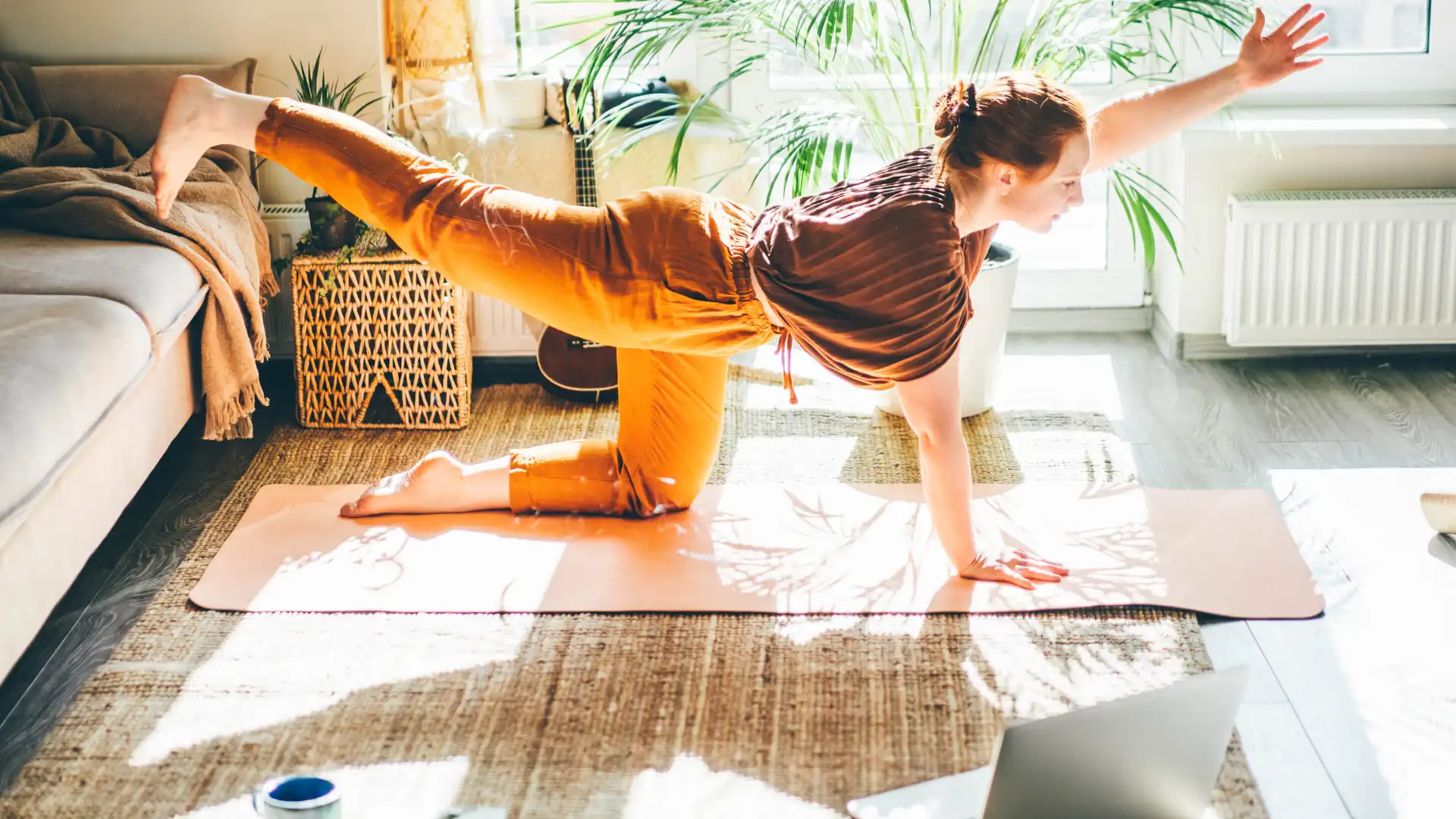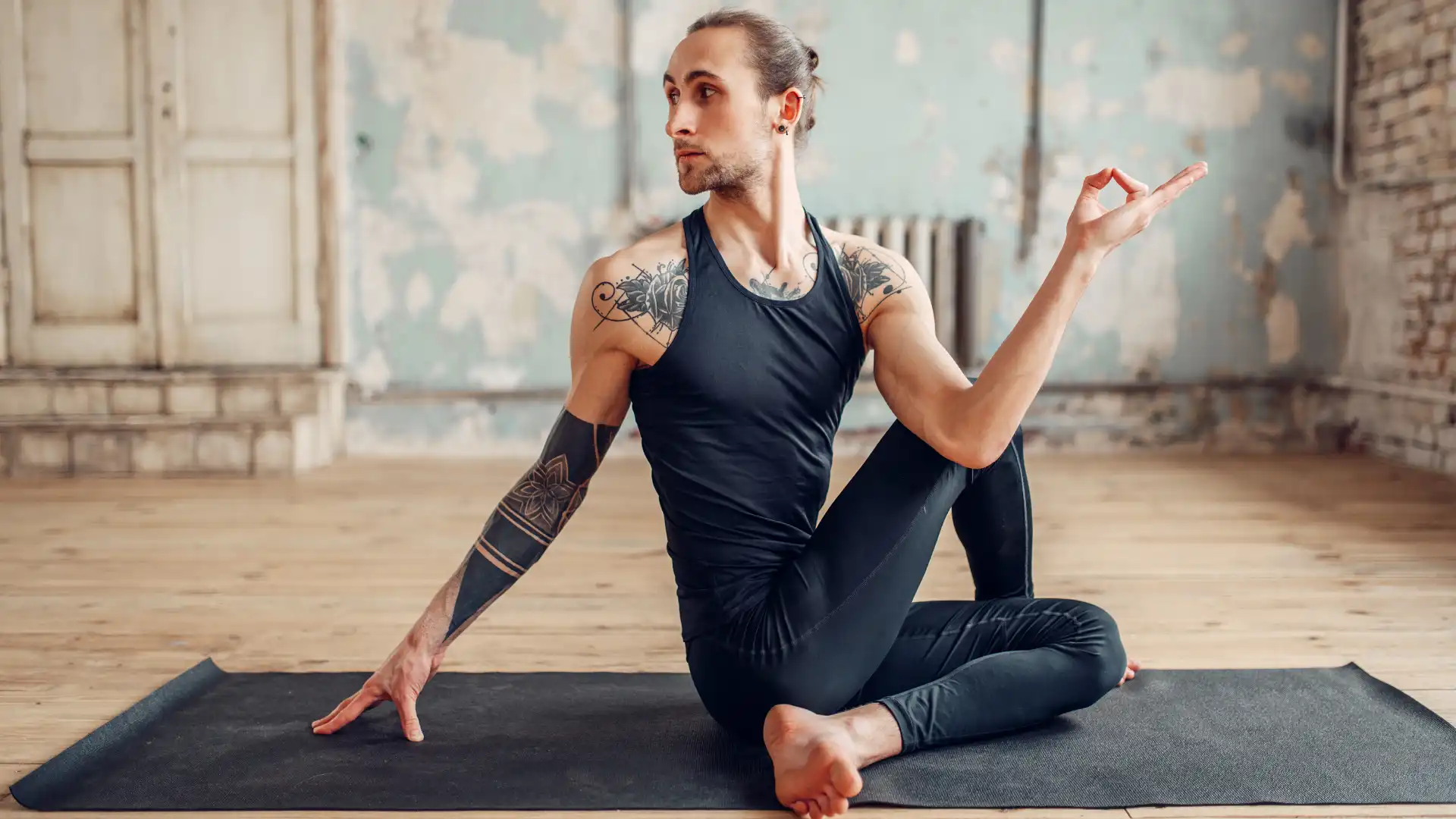8 Tips to Create a Strong Home Yoga Practice

It’s not news to anyone reading this that the world is in the midst of a pandemic. The death toll and the number of those infected with COVID-19 rises by the day. Parents are doing their best to homeschool their children, gig and hourly workers have lost work and even found themselves unemployed. There’s an ever-present fear of getting infected or unknowingly infecting someone else. Anxiety, fear, and dread are in conversations, all over social media, and (more subtly speaking) thick in the air.
As a bit of an understatement, we could use the calming and empowering effects of yoga practice more than ever. Yet social distancing and business closures mean that we can’t go to the studio and take class, as we might be used to doing. Yogis likely feel the absence of their yoga communities. Amid these challenges, many yoga teachers are offering free and donation-based classes through Instagram Live, Facebook Live, or their websites (offering Venmo handles or their phone numbers to transfer through bank systems such as Zelle as payment avenues).

Other instructors are splitting proceeds from this online class content with charitable organizations such as food banks, serving the needs of people economically hard hit by current business closures. In a time when social distancing can make us feel socially isolated, the yoga community at large is coming together to demonstrate another kind of Satsang (community)—one built on solidarity and generosity—through the digital space. From another perspective, these offerings allow practitioners to practice from home as they practice social distancing. Though direct feedback from teachers and the communal energy of a group class are irreplaceable gifts, home practice has its own unparalleled benefits.
Most studio trainings are canceled or postponed at this time. As an additional home study option, Yoga U Online’s practice channel and course library are there to guide practitioners through home practice and learning. The yoga and wellness blog also has a plethora of articles on building and maintaining a fruitful home yoga practice. The following are some common or particularly noteworthy recommendations in those pieces, applied to this time of social distancing and uncertainty. Breathe deeply, keep calm, and practice on!
8 Tips for a Strong Home Yoga Practice
-
Schedule It
If it’s in your planner or calendar, it’s more likely that you’ll get it done. If you schedule other things in your life, why not schedule something for your own wellness? Isn’t that as important, if not more important?
-
Schedule It Wisely
If you’re not a morning person, it doesn’t make too much sense to schedule a sunrise practice. If you’re not a night owl, a before-bed practice would seem inadvisable as well. Even if you can manage to make such planning work once or twice, it’s unlikely that you’ll make it work consistently. One silver lining of working from home, and/or suddenly having a lot of time from home: you can schedule your practice when it works best for you when you’re most likely to be consistent with it.

-
Schedule Practice with a Loved One—with Caution
Practicing with close friends and family in a time of social distancing can be inadvisable. For instance, the more we expose ourselves to others, the higher the risk of getting infected or infecting others. And we should practice even more caution if we are in a position to be in contact with anyone who’s elderly, as they are particularly at risk. An option is to plan practice with parents, siblings, significant others, roommates, or others you’ve already been “exposed” to (in the scientific sense of the word). Practicing with someone close to you can hold you accountable and simply make it more enjoyable. Just be sure to wash hands and mats before and after, set mats six or more feet apart, and note who has traveled where and when. If there’s a chance that one or both of you has been exposed to the virus, skip practicing together.
-
Set a Goal
Being inspired to achieve a particular pose, such as Adho Mukha Vrksasana (Handstand Pose) or Koundinyasana (Sage Koundinya’s Pose), could be just what you need to feel a bit more uplifted during this time when cabin fever may be setting in. Think about what it takes in the body to achieve a particular pose, or read up on it if you’re not sure. Then make your practice out of poses that challenge and allow your body to get there, also including poses and flows to warm you up, more grounding poses to cool you down, and a final Savasana (Relaxation Pose) or closing meditation. For instance, Svarga Dvijasana (Bird of Paradise Pose) requires open shoulders, open hips, a strong core, and a steady balance. If it’s a goal pose of yours, design a practice to encourage those things in your body and practice.
-
Make It Your Own
Another key benefit of home practice is that you can design it to be just right for you, Goldilocks-style—not too novice, not too advanced, but just right. That said, challenging yourself, short of pain, and the potential for injury, isn’t a bad thing (see #4). Neither is focusing on more basic poses and exploring their subtleties.
-
Give Yourself What You Need
Everything that has happened with this global pandemic—changes to our own lives, changes to the lives of those we love, and the constant stream of rapidly shifting news—can lead to mental and emotional exhaustion. Look inward and ask yourself what you need from practice. Then answer honestly, in the spirit of the yogic value Satya (truthfulness). If it’s rest and restoration, do a more restorative home practice. If it’s a sweaty athletic practice, give yourself that. If your home practice fulfills your deeper needs, then you’ll also be more likely to be consistent with it, and you’ll likely enjoy it more. And if you get stumped, don’t panic. Breathe, find a restful pose, and start again when you’re ready.
-
Reward Yourself
Basic behavioral psychology tells us that if we’re rewarded for something, we’re more likely to do it again. Any parent or anyone who has trained a puppy can confirm that. While you’re not a puppy or a child, the same idea holds. After practicing, enjoy a delicious snack, an episode of two of a favorite television show or podcast, and some snuggle time with a pet—whatever might make you feel lighter and more joyful. Your post-practice treatment might even prolong the feel-good effects of your actual practice!
-
Bring It Outside
As long as you remain six feet away from others, you’re acting in alignment with public health guidelines. As it gets warmer—if it isn’t already warm where you are—an independent outdoor practice might be just what you need to lift your spirits. Bring a mat, wash your hands, or use hand sanitizer, and generally, be safe and smart. Your body, mind, and spirit will be all the stronger and all the more whole for it.
Also, read...
Warrior I Pose: 5 Strengthening Variations
4 Easy Ways to Use a Sandbag in Yoga Practice
Exercise and Longevity: Diversify Your Yoga Practice for Maximum Benefits
Related courses
Breath as Medicine: Yogic Breathing for Vital Aging
Yoga and Myofascial Release: Releasing Chronic Tension with the Bodymind Ballwork Method

Kathryn Boland is an RCYT and R-DMT (Registered Dance/Movement Therapist). She is originally from Rhode Island, attended The George Washington University (Washington, DC) for an undergraduate degree in Dance (where she first encountered yoga), and Lesley University for an MA in Clinical Mental Health Counseling, Expressive Therapies: Dance/Movement Therapy. She has taught yoga to diverse populations in varied locations. As a dancer, she has always loved to keep moving and flowing in practicing more active Vinyasa-style forms. Her interests have recently evolved to include Yin and therapeutic yoga, and aligning those forms with Laban Movement Analysis to serve the needs of various groups (such as Alzheimer’s Disease patients, children diagnosed with ADHD, PTSD-afflicted veterans – all of which are demographically expanding). She believes in finding the opportunity within every adversity, and doing all that she can to help others live with a bit more breath and flow!



